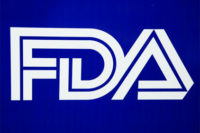 The US FDA is taking three steps to protect public health and promote the judicious use of medically important antibiotics in food-producing animals. Based on a consideration of relevant reports and scientific data, FDA is proposing a voluntary initiative to phase in certain changes to how medically important antimicrobial drugs are labeled and used in food-producing animals. The agency is taking this action to help preserve the efficacy of medically important antimicrobials for treating disease in humans.
The US FDA is taking three steps to protect public health and promote the judicious use of medically important antibiotics in food-producing animals. Based on a consideration of relevant reports and scientific data, FDA is proposing a voluntary initiative to phase in certain changes to how medically important antimicrobial drugs are labeled and used in food-producing animals. The agency is taking this action to help preserve the efficacy of medically important antimicrobials for treating disease in humans.
FDA is issuing three documents that will help veterinarians, farmers and animal producers use medically important antibiotics judiciously in food-producing animals by targeting their use to address only diseases and health problems. Under this new voluntary initiative, certain antibiotics would not be used for so-called “production” purposes, such as to enhance growth or improve feed efficiency in an animal. These antibiotics would still be available to prevent, control or treat illnesses in food-producing animals under the supervision of a veterinarian.
“It is critical that we take action to protect public health,” says FDA Commissioner Margaret A. Hamburg, MD “The new strategy will ensure farmers and veterinarians can care for animals while ensuring the medicines people need remain safe and effective. We are also reaching out to animal producers who operate on a smaller scale or in remote locations to help ensure the drugs they need to protect the health of their animals are still available.”
FDA is publishing three documents today in the Federal Register.
►A final guidance for industry, The Judicious Use of Medically Important Antimicrobial Drugs in Food-Producing Animals, that recommends phasing out the agricultural production use of medically important drugs and phasing in veterinary oversight of therapeutic uses of these drugs.
►A draft guidance, open for public comment, which will assist drug companies in voluntarily removing production uses of antibiotics from their FDA-approved product labels; adding, where appropriate, scientifically supported disease prevention, control and treatment uses; and changing the marketing status to include veterinary oversight.
►A draft proposed Veterinary Feed Directive regulation, open for public comment, that outlines ways veterinarians can authorize the use of certain animal drugs in feed, which is important to make the needed veterinary oversight feasible and efficient.
“USDA worked with the FDA to ensure that the voices of livestock producers across the country were taken into account,” says Dr. John Clifford, USDA chief veterinary medical officer, “and we will continue to collaborate with the FDA, the American Veterinary Medical Association and livestock groups to ensure that the appropriate services are available to help make this transition.”
While this is a good start, not all are happy with the incompleteness of the action. “This is an important step in protecting the public from the proliferation of antibiotic-resistant bacteria,” says Paige Tomaselli, Center for Food Safety (CFS) staff attorney. “But, it’s high time that FDA takes drastic measures to eliminate all non-therapeutic uses of all antibiotics in food and animal production.”
According to CFS, FDA said its actions would result in a “sea change” from decades of widespread antibiotic use. FDA’s plan includes encouraging industry to voluntarily eliminate non-therapeutic antibiotic use within three years, to include veterinary oversight or consultation for administration of antibiotics to food-producing animals and to implement “judicial use” principles. FDA’s action included issuing a Final Guidance for Industry (#209), issuing a proposed Guidance for Industry (#213) with specific recommendations on how to align animal drug applications with Final Guidance #209, and a proposed rule linking FDA’s Veterinary Feed Directive (FDA link no longer available) with the industry guidances. When FDA releases the proposed rule, the public will have 90 days to comment, according to CFS.
For more information from FDA, visit its Q&A on the web.






